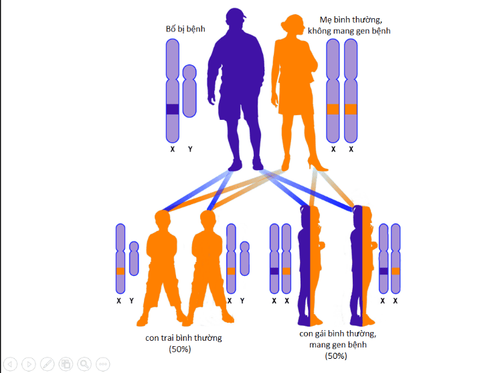This is an automatically translated article.
Posted by Dr Children's Center - Vinmec Times City International General Hospital
G6PD enzyme deficiency (Glucose - 6 - phosphate dehydrogenase) is a common disease in humans. Currently, there are more than 400 million people infected with the disease in the world, South Asia has a relatively high prevalence rate of 3-5%.
1. Consequences of G6PD . enzyme deficiency
Deficiency of G6PD enzyme belongs to a group of recessive genetic diseases on the X chromosome, so men have the disease higher than women, and women are rare. A mother carrying the disease gene can pass it on to her son, a daughter can only get the disease when both parents carry the disease gene.
When you or your child has a deficiency of the enzyme G6PD, you should inform your doctor and healthcare provider to prevent adverse reactions after taking certain medications.
Hemolytic anemia and persistent neonatal jaundice are two common problems in children with G6PD deficiency. The enzyme G6PD is essential for biochemical reactions in red blood cells to help stabilize cell membranes against oxidative stress agents found in certain drugs, foods, and infectious disease agents. If the body lacks the enzyme G6PD, the red blood cell membrane will be less durable, easily broken before the agents causing oxidative stress, the resulting red blood cell rupture will cause hemolysis. Prolonged hemolysis will lead to anemia. When red blood cells are broken, they will release free bilirubin, if liver cells do not have time to metabolize it to eliminate it, this substance will remain in the blood, causing babies to have jaundice, yellow eyes and if more, it will be absorbed into the brain. causing nuclear jaundice and leaving cerebral palsy.

2. Symptoms of G6PD enzyme deficiency in children
Manifestations of hemolysis in the neonate include: refusing to breastfeed, dark yellow urine, yellow skin and eyes.
If hemolysis is caused by drugs, foods and chemicals: Usually occurs after 2 to 3 days with acute hemolytic disease:
Body fatigue, pale skin sweating, cold limbs easily dizzy. Dark urine. You can prevent hemolytic consequences for G6PD deficiency disease caused by the following methods:
When taking medicine, consult a doctor, avoid using drugs, foods, and chemicals in the table on the last page. . When you have an infection, you need to see a doctor for timely treatment.

3. Detecting G6PD deficiency in newborns
G6PD deficiency is an inherited disease. However, if prevented, children can live and develop like a normal person.
Screening for G6PD enzyme deficiency:
48 hours after birth, the baby will take blood from the heel or vein for testing. The results will be notified to the family as soon as possible. If the test results measure low G6PD activity < 200 IU / 10^12 HC, the baby will be re-examined and tested for G6PD gene analysis. Children lacking G6PD enzyme will be consulted by: Geneticists: analyzing G6PD disease genes for baby and family. The pediatrician will advise the family to take care of the child and avoid certain drugs and foods.

To register for examination and treatment at Vinmec International General Hospital, you can contact the nationwide Vinmec Health System Hotline, or register online HERE.













